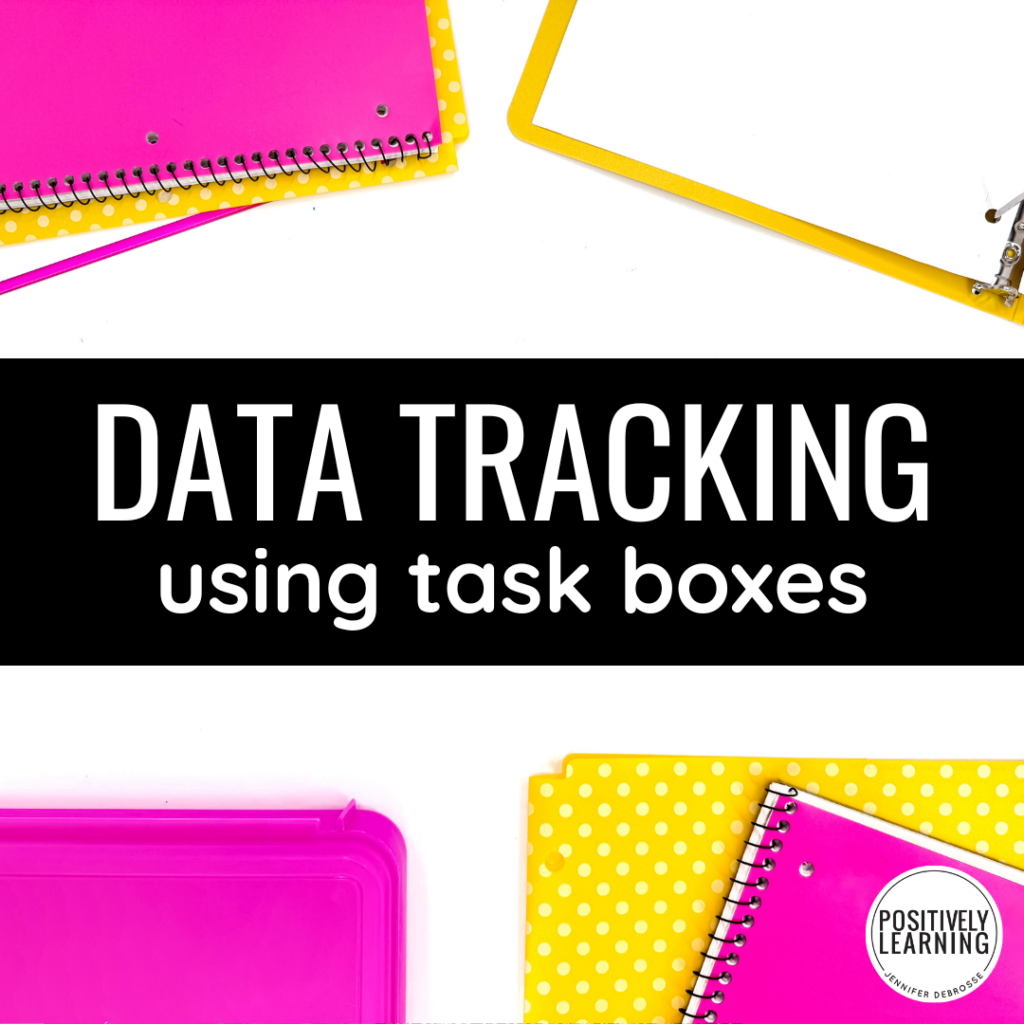
Hey there, special educators! Let’s dive into the dynamic world of task boxes and how they can revolutionize data collection in your special education classroom. If you’ve been searching for a great way to track student progress, particularly for IEP goals, you’re in the right place. Task boxes are not just about providing different basic skills training; they're a cornerstone in creating an effective independent work station for your special education students.

Table of Contents
ToggleFirst thing's first: What are task boxes? They're physical items, often thematic or skill-specific, stored in drawer bins or file folders, forming a part of a structured work task system. These can range from themed printable work task boxes to themed task cards, focusing on early math, language arts, or even life skills. The best thing about task boxes is their versatility, catering to students of multiple ability levels, from preschool to high school.
When it comes to data collection, there are two main approaches:
1. Skill-Specific Data Tracking – This involves collecting data on the particular task card or activity your student is working on. Whether it’s addition problems, completing a sentence, or a specific part of speech therapy, the data sheets are focused on the skill at hand.
2. Process-Oriented Data Tracking – This approach is all about looking at the entire process of using task boxes independently. It's about student independence, work endurance, and how well they manage the whole system of task boxes – a crucial part of occupational therapy and vocational education.
Which task box data approach will you be incorporating into your classroom?
Creating an independent work station with task boxes is a fantastic way to foster student progress. Start with a set of tasks tailored to different levels of ability, incorporating flash cards, file folder activities, or even mini schedules for visual support. These stations are not just for morning work or direct instruction periods; they can be a central part of your lesson plans.
Every special education student is unique. Utilize task analysis to create task card task boxes that meet the beginning of a student's journey in your classroom. Whether it's for a student in middle school or a whole entire grade level, the task boxes can be the perfect tool to address specific needs.
Ready to start progress monitoring? Try out these free data collection sheets to keep track of student work. These data sheets can be simple yet comprehensive, capturing everything from the total time spent on tasks to the specific achievements in different tasks.
Get started with task box tracking with these free data collection sheets! They can be found inside the Facebook Community built to support you:
Task boxes are not just great activities; they're an integral part of your special education classroom. They support independent work habits, facilitate student work in new skills, and provide different ways to engage with learning materials. Whether you're a seasoned special education teacher or a new staff member, integrating a task box system into your classroom is a step towards fostering a more inclusive and effective learning environment.
And there you have it – a complete guide to using task boxes for data collection in your special education classroom! Embrace these new resources, and watch as your students thrive in an environment tailor-made for their success. Keep an eye out for task box bundles and other helpful information to continuously evolve your approach. Happy teaching!

I’m Jennifer and I was a special educator in the elementary school setting over the past decade. I entered the classroom every day dedicated to making learning inclusive AND engaging.




This website uses cookies to ensure you get the best experience on our website. See full disclosure here.
This website uses cookies to ensure you get the best experience on our website.
See full disclosure here.